How Trino Verkade Went From Lee McQueen's First Employee to Leading His Foundation
- Oops!Something went wrong.Please try again later.
- Oops!Something went wrong.Please try again later.
In our long-running series "How I'm Making It," we talk to people making a living in the fashion and beauty industries about how they broke in and found success.
Trino Verkade is a towering figure in fashion. But she's not a designer: The Liverpool-born executive was Lee Alexander McQueen's first employee back when he started his brand in London in 1992, and she now leads the Sarabande Foundation, the charity set up by the late designer in 2006 to support young creatives, named after his Spring 2007 show.
From the early '90s and through his untimely death in 2010, McQueen and Verkade were a powerhouse duo. If he was the brain's creative right hemisphere, then Verkade was the analytical left. "Even now, when I talk about [working with Lee], it's like it happened to somebody else," she says, her fiery red tresses brightening up the video chat. "What an incredible journey I was able to help with."
After leaving the brand, Verkade had stints at Thom Browne and Mary Katrantzou. She joined Sarabande as CEO in 2017, after initially serving as a founding trustee. Today, the foundation offers scholarships and studio spaces to artists across disciplines, and has amassed industry support from companies like LVMH, Khaite, Nordstrom and many more. It also puts on programming, such as "What Now?", one-on-one, drop-in mentoring sessions and panels for fashion and arts graduates wondering what to do next. (It's coming to New York on May 7 at The Standard, East Village. Tickets are free.)
Her storied career is the result of equal parts creative tenacity and keen understanding of the fashion business, ever-changing as it is. Read on to learn how Verkade went from being Alexander McQueen's first employee to steering Sarabande's philanthropy.
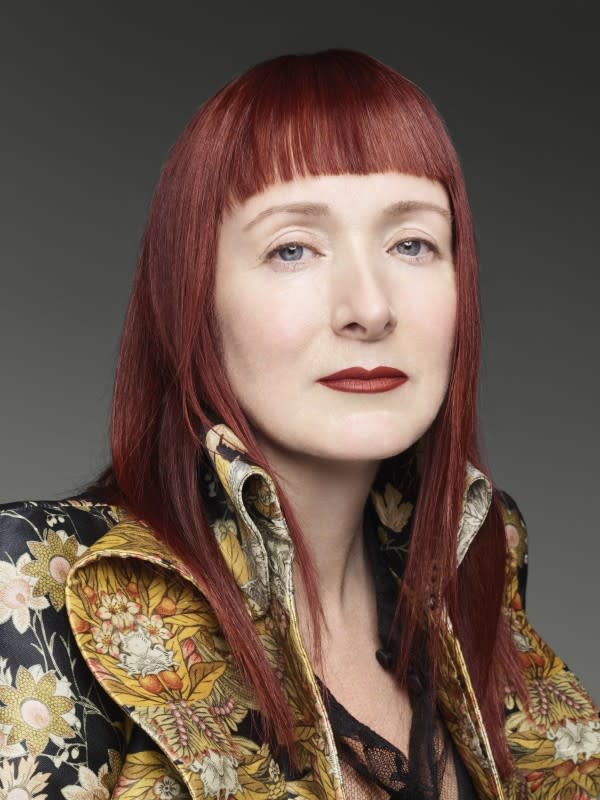
Photo: Sølve Sundsbø/Courtesy of Sarabande Foundation
What was your relationship like with fashion growing up?
I grew up in Liverpool, so I used to go to the nightclub as a young person and would make myself clothes to wear. Everything was secondhand, just like it is now — I think we've kind of come full circle, actually. My age group, we went to thrift shops and bought 1940 suits and wore them with something modern. That was the only way that you could really find fashion: to customize and make things yourself.
I eventually moved to London to go and study, which really opened my eyes, because it was a big metropolitan city. London was where everything was. It was a different world from how I'd grown up, where fashion was very thrift and very make-it-yourself. All of a sudden, I was in a city where there are designers.
When I graduated, I started to work for a very unknown young designer at the time named Alexander McQueen. There were no expectations, because that was in the early '90s: If you went into fashion, it wasn't a career as such — it wasn't like you're going to be rich and famous. People didn't think like that. You do it because it's an art form. Certainly it was for Lee.
How did you navigate the industry back then, find Lee and build that partnership?
I didn't know what I wanted to do [after college]. When you don't know, you find out who you are. I knew what I was good at, and I think that's something super important, to know what you are good at and what you excel in. I studied fashion and marketing, and I also did fashion design — but I was not as good as Alexander McQueen! I let him take that lead. But I could do my job better than him because we all have a skill. I loved working with somebody with really crazy ideas. I'm a Virgo: I'm very solid, but give me somebody who's going a bit crazy, and I love it because I can build a structure around that. That made the good combination with me and Lee. I never said to him, 'That's crazy, you shouldn't do that.' I'd be like, 'Wow, that's a great idea. Let's get on with that.'
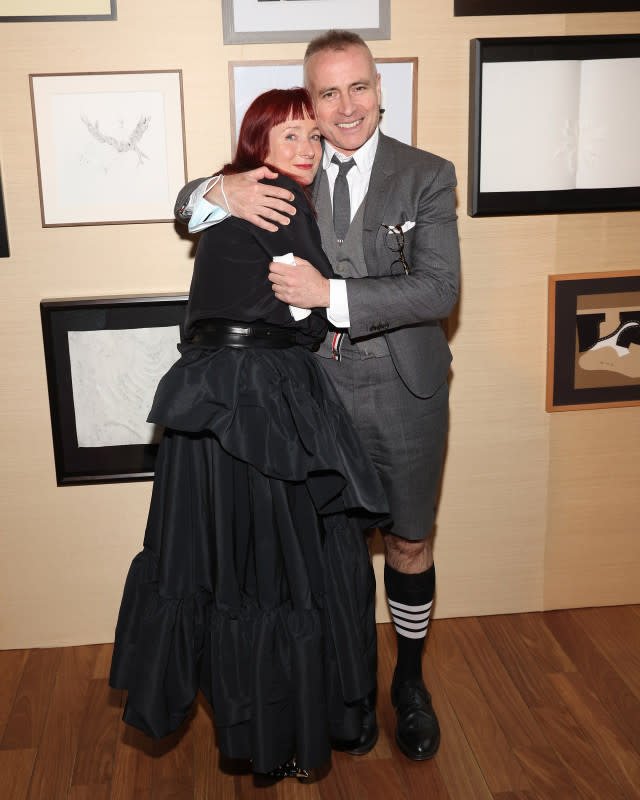
Photo: Taylor Hill/Getty Images
I love the idea of building order in chaos, which helps it thrive. When you first started working with him, it was such a small team. What was, technically, your original job? How did it develop over time?
I originally did PR after leaving college, and I also did a bit of styling with Katy England, which is how I met Lee. I tried lots of different jobs. I did my time working with lots of different people. When you work for a really small team and a really young designer, the idea of having just one role [pretty much doesn't exist]. You're doing PR, but you're also organizing the shows, and you're doing the sales, and you're speaking about maybe getting a sponsor to give you some tartan to make an outfit. You learn on the job. That's got as much to do with being open and just getting on. Right now, when jobs are changing very quickly and the world is changing very quickly, it's almost more important not what you know, but what you're willing to learn very quickly.
What have been your biggest career milestones?
Working with Lee. That was 16 years of amazingly hard work and really enjoying most of it. I also loved working with Thom [Browne] — that was a very special moment for me because it was something that I threw myself into: a strange country with a team I didn't know. They became like a second family to me.
I did the Met show ["Alexander McQueen: Savage Beauty"] with Andrew Bolton, and that was an incredible experience. I'd never worked on an exhibition of that level, with that much impact internationally. I didn't know what I was doing, so I wasn't afraid about what we did. I was guided by an amazing man like Andrew.
With the foundation right now, it's so fulfilling to work with such amazing creatives and to be so close to them all the time. It's great to be around people who just keep on creating and still believe that there's something new to be done.
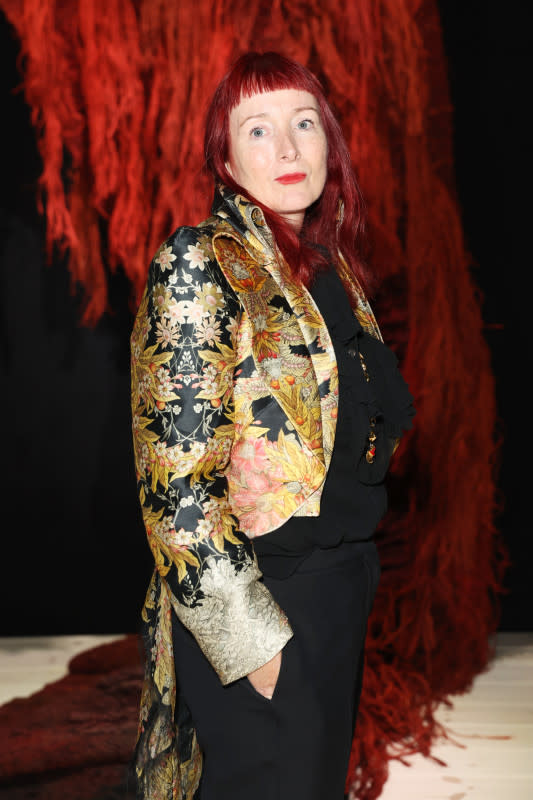
hoto: Dave Benett/Getty Images
You've spoken about how Lee wanted to support creatives financially based on how that majorly helped his own career. What was it like to start Sarabande and navigate how to memorialize a friend while moving the mission forward?
I'm going to be really honest: Lee didn't leave us any instructions of what he wanted Sarabande do. We started with a blank piece of paper. The one thing I did know is that we had to do scholarships, because Lee had spoken to me, maybe 10 years beforehand, that scholarships — because he'd been helped out by his aunt — are important to make sure that people have the opportunity to study who couldn't go to college. We want everybody to have the right to go to college if they can, from all different backgrounds, not just people with the financial means... We need people from all different backgrounds to be in our pipeline. We give a lot of scholarships to people from all countries [to] study in the U.K., in two courses: fashion at Central Saint Martins and art at Slade School of Fine Art.
The idea was to create something like the '90s, which was creators from all different backgrounds of art, fashion, film, photography — people who just made really different things and all worked together and had a real respect for each other... That's the main concept of the studios: You can look at the person next door to you, and not only do they inspire you with their work, but perhaps they have a different approach to how they market that work or how they want to be seen. You can take something from that and realize there's not just one pathway with what you want to do.
In any big city, it's eye-wateringly expensive to rent any space right now. Giving a financially accessible space is really important.
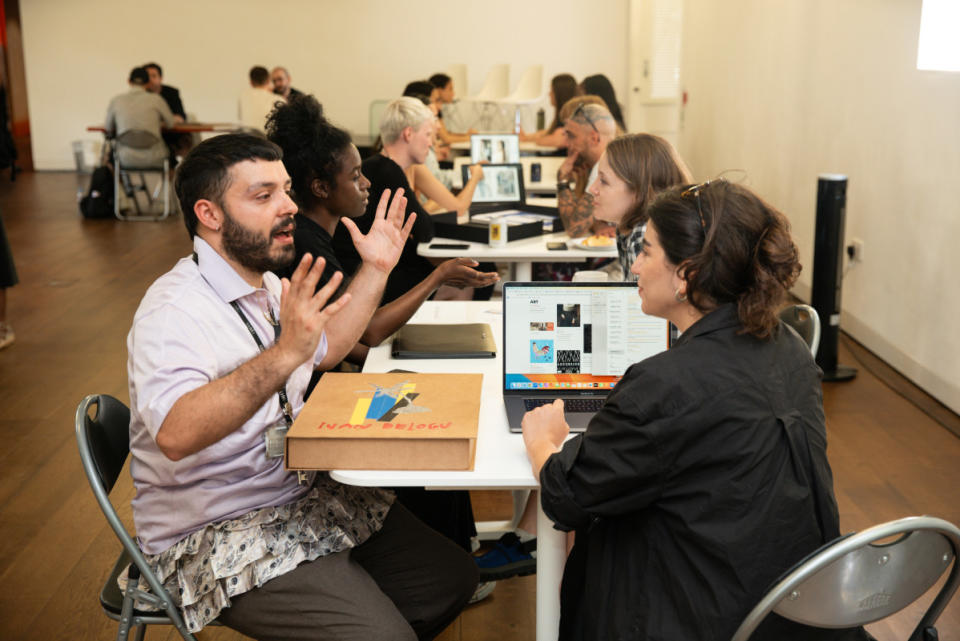
Photo: Courtesy of Sarabande Foundation
I feel like it does something incredibly nourishing. In art, those collectives historically have always been a home base for building who you become and who you are.
As an artist, you're a sole trader. You're working on your own. You've got to do everything yourself. It can be super hard. Having a studio next door to you with somebody who's doing their own thing and being able to just have a coffee with them and chat about it... We do these fun things called 'artist crits', because so many artists say they have no one to talk to about their work. Everybody comes to bring a piece of work and talk to a other artists about it.
[Our artists are] working together and collaborating all the time. Right now, one is taking a showroom in Paris and asking all the other designers if they want to come and share it. Instead of waiting for a big organization to take a commission, they're doing it together through the foundation.
We have two locations in London, which gives us 32 studios. We're up to 240 artists... We have a mantra: 'Once a Sarabande artist, always a Sarabande artist.' It doesn't matter if you were an artist here four years ago, you're given the same support. If you need the main space, you can use it for free. If you want to borrow the photography equipment, if you a need mentor, if you need help with a contract — we never never say, 'No, your time passed.' It's your time always.
We're interested in it not just being in London, and probably bringing it to New York. We want to live in that world where it's all different voices with all different backgrounds, and I think New York has that.
What do you look for in young creatives? What what makes you believe in an artist's vision?
A unique vision. There's an endless amount of people coming out with amazing ideas that don't have to be commercial. That's not the world that we need to live in. We need people to dream and show that there are truly artistic approaches to their practice. It's not just about making something that people want to buy — sometimes it's just something that you want to look at and go, 'Wow, I never thought the world could look through somebody's eyes that way,' and that might inspire somebody else to look through in a similar lens. A real dedication to the craft is really important.
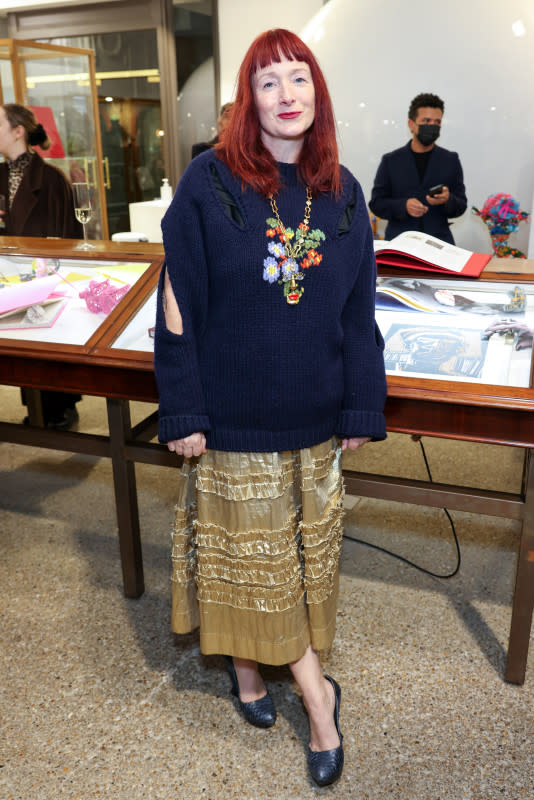
Photo: Dave Benett/Getty Images
What have been some of the biggest lessons you've learned from the artists at Sarabande and from building the foundation?
From the artists: tenacity. It's really hard when you're creating stuff. Maybe as a fashion designer, you go out with your collection, and everybody says it's great, yet the stores don't buy it — still doing it because you believe in it is a really strong, defining character.
We always put artists first. We just reduced all of the ticket prices in London for talks, because people don't have any money. That hits us financially, but we'll work that out because that's the right thing to do. Do the right thing first, be true to you, then find a solution. It seems a bit unusual of an approach for the business of a charity, but it works so far.
What were some of the biggest lessons that you learned when you were working with Lee that you hold to this day?
Not to question things. Lee would try something, and then he wouldn't be afraid of changing his mind. There was no ego as in, 'I've done it, so it must be good.' Sometimes, you could spend ages doing something, and then it didn't work... or it did work, but the concept of failure was only in not trying. It's a well-used phrase, but it really is true.
Is there a best piece of advice you've received or something that you've learned that that's stayed with you?
Not taking shortcuts and doing something that you truly believe in is really important. Not rushing something. Not expecting things to happen in a certain timeframe. Allowing time to learn and to do things. Time is one of your best friends.
This interview has been edited and condensed for clarity.
Want the latest fashion industry news first? Sign up for our daily newsletter.

